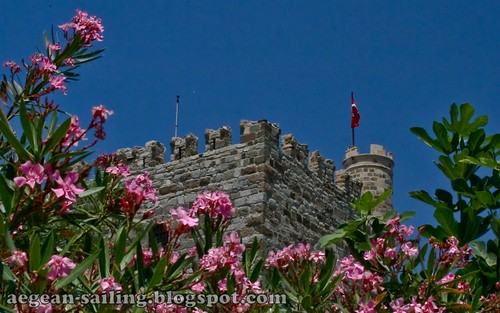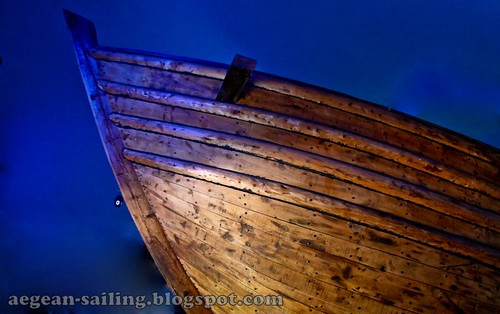
Bodrum (in Greek, Αλικαρνασσός, formerly Budrum, previously Petronium, originally Halicarnassus) is a Turkish port in Muğla Province. It is on the Bodrum Peninsula, near the northwest entrance to the Gulf of Gökova, and faces the Greek island of Kos. Today, it is a center of tourism and yachting. It is the ancient Halicarnassus of Caria, renowned for the Mausoleum.
The town is very popular tourist resort for northern Europeans due to its attractive coastline and active night-life (Bodrum has been humorously referred to as the "Bedroom of Europe"). It can safely be said that every year at least a few hundreds of thousands of tourists visit Bodrum. The current population is 32,227 (2000 census).
A fishing village until the early 1970s, Bodrum is built on the ruins of ancient Halicarnassus. It is now Turkey’s liveliest resort, attracting poets, singers, artists and package tourists. Its perfect harbour was colonized by ancient Greeks in the 11th century BC and the city later flourished under Persian rule. It was nominally the capital city of the satrapy of Caria; its location ensured the city enjoyed considerable autonomy.
It was here that the historian Herodotus (484 – 420 BC) was born, but Halicarnassus’s greatest glory was under Mausolus, who ruled on behalf of the Persians from 377 to 353 BC. When he died in 353 BC, his wife, Artemisia, employed the ancient Greek architects Satyros and Pithios, and the sculptor Scopas to build a monument, a tomb to him. His tomb is one of the Seven Wonders of the Ancient World, and was so well-known that it gave us the word “mausoleum”. Originally a temple-like structure decorated with reliefs and statuary on a massive base, only the foundations and a few pieces of sculpture now remain. After the brief tenure of the Knights of St John, who founded the Castle of St Peter in 1404, the city sank into obscurity. The castle and its town became known as Petronium, whence the modern name derives. Suleiman the Magnificent conquered Petronium for the Ottomans in 1522. Today, the sheltered anchorage is busy with luxury yachts and locally-built gulets used by seafaring holidaymakers.
Bodrum Castle (Bodrum Kalesi), located in southwest Turkey in the city of Bodrum, was built by the Knights Hospitaller starting in 1402 as the Castle of St. Peter.
Sir Thomas Docwra was one time captain of the castle. In 1522 when faced by attack from Sultan Suleiman, the Grand Master of the Hospitallers ordered the Castle to be repaired. In desperation, the Hospitallers broke open the Mausoleum, finding all sorts of elaboratedly adorned marble blocks and carvings which they admired but nevertheless destroyed, using the debris as building material. They also discovered the sarcophagus of Mausolus, but this was stolen during the night. The Knights Hospitaller were soon defeated and driven from Bodrum. Some decorative slabs have been found in the ruins of the Castle, one slab has turned up in Genoa.
In 1846 Lord Stratford de Redeliffe, the British Ambassador to Constantinople obtained permission to take twelve slabs showing a combat between Greeks and Amazons. Sir Charles Newton conducted excavations and removed a number of stone lions in 1856. Presently, these are all to be found at the British Museum.
Museum of Underwater Archaeology
The castle is the home of the Bodrum Museum of Underwater Archaeology, with a vast collection of glass, bronze, clay, iron items and an ancient Phoenician shipwreck.
